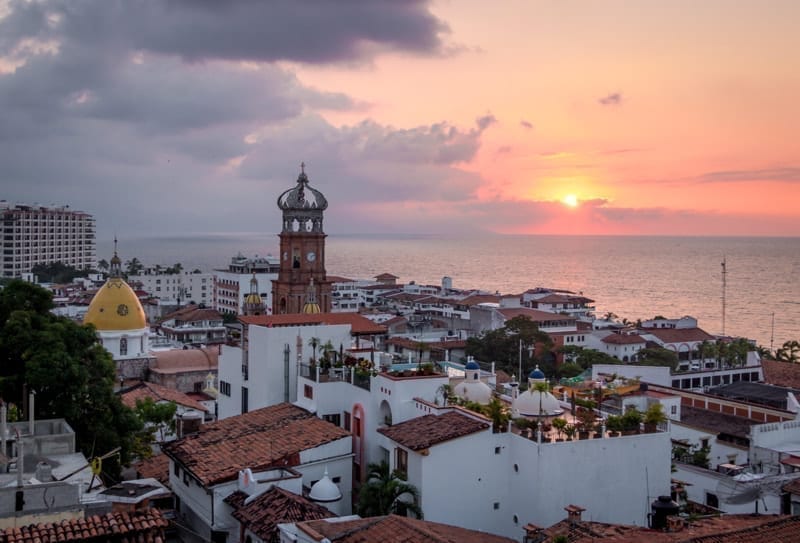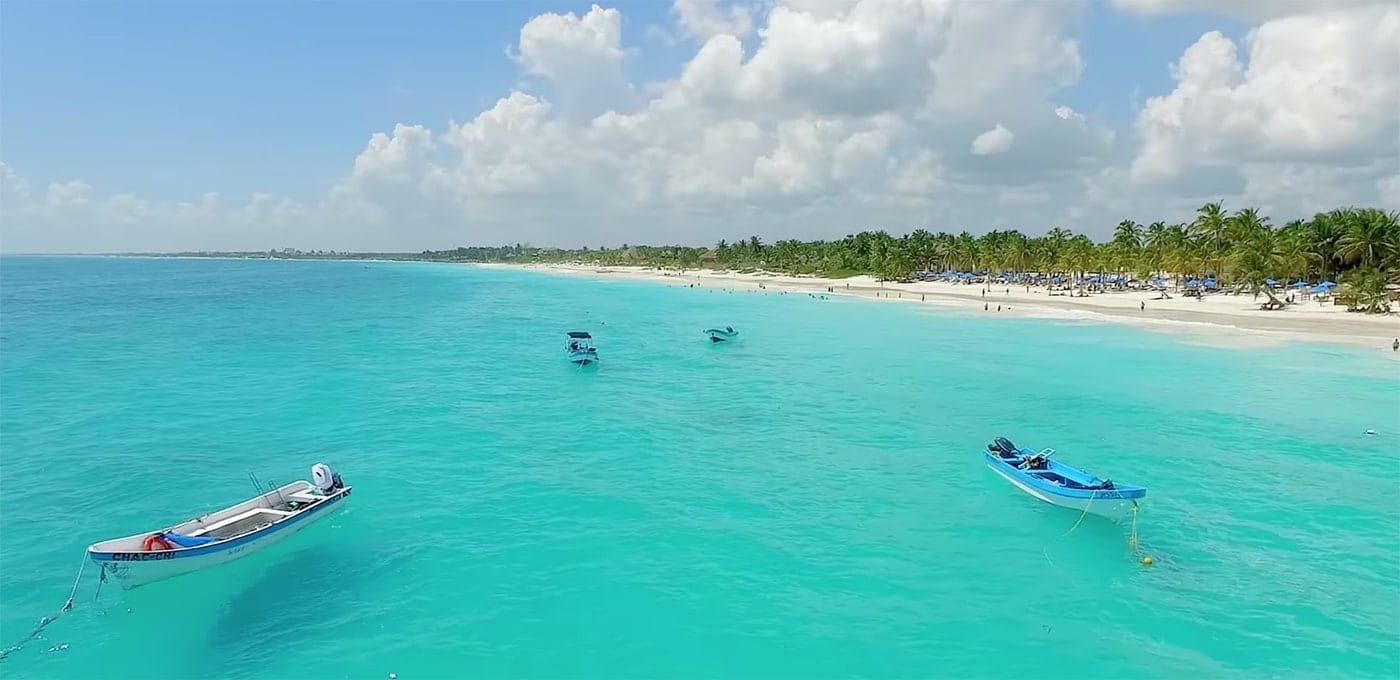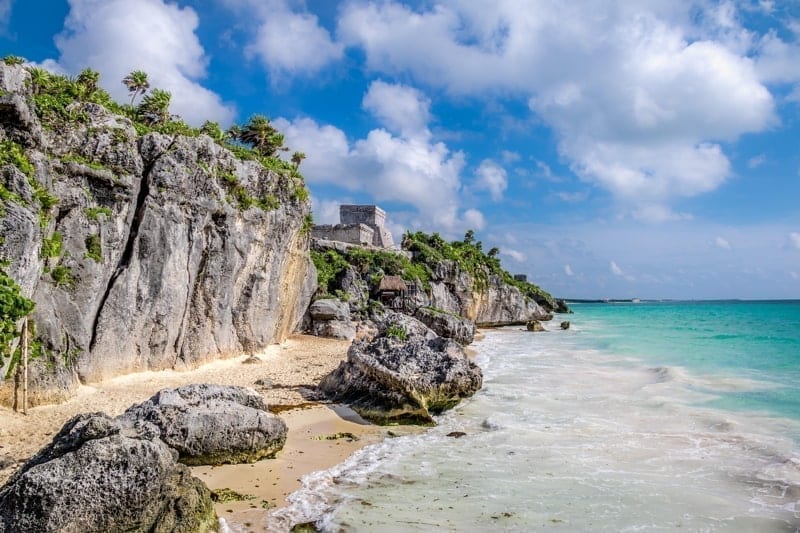One of Mexico’s greatest appeals for the would-be retiree and expat is the diversity of lifestyles it offers.
You could live with a view of the lapping Caribbean from your bedroom window… or the crashing Pacific on your doorstep…
You could (if your budget allows) enjoy a fully appointed, even luxe life… or a sweet, simple, back-to-basics escape.
Puerto Vallarta
Puerto Vallarta, for example, is a top choice for comfortable, convenient living on the ocean.
How Puerto Vallarta Was Discovered
Until the 1950s, Puerto Vallarta was a small fishing village along a spectacular bay on the Pacific, modestly popular among Mexicans as a beach resort. Then, in 1963, John Huston filmed “The Night of the Iguana” in Mismaloya, a seaside village just south of Puerto Vallarta. The film’s star, Richard Burton, was involved with actress Elizabeth Taylor at the time. Taylor followed Burton on location… and the paparazzi followed her.
Suddenly Puerto Vallarta was all over the news… and on the map as far as Americans were concerned. It’s remained there ever since.
Burton and Taylor both eventually bought houses in Puerto Vallarta and attracted other jet-setters to this primo coast. About this same time, the Mexican government began to invest heavily in infrastructure in the area, including highways, roads, and public utilities, all of which made Puerto Vallarta more accessible and attractive as a tourist destination. Luxury hotels began to spring up, and American tourists, especially from the Western states, began to flock here.
Puerto Vallarta Today
Today Puerto Vallarta is one of the most sophisticated resorts in Mexico, with more cachet than Mazatlán and more chic than Cancún. Though it’s a major cruise ship destination, with ship arrivals almost daily, the massive influx of tourists (about two million visit each year) hasn’t lessened Vallarta’s appeal for those thinking about staying on longer term.
Walking around Vallarta, you get that happy, vacation-time feel that successful beach resorts exude. Yet, frankly, you can have a great time here even if you never set foot on the beach… and you certainly could enjoy a comfortable, well-appointed retirement on this coast.
This Is One Of Mexico’s Most Cosmopolitan Beach Resorts

In the city proper, you find cultural activities including plays, films, jazz and classical concerts, gourmet restaurant festivals, gallery openings…
Puerto Vallarta is also a pleasant place to stroll, both along the malecón and up and down the narrow roads of the hills just behind the seashore. Farther inland you find more active activities such as zip-lining, horseback riding, and hiking.
You could start each morning with a walk or a jog along the malecón, alongside the blue Pacific, followed by coffee in a downtown coffee shop or on your terrace overlooking the bay… then build your day out from there.
Fully half the population works in the tourism business, so English is widely understood, a big plus if you speak little or no Spanish. A whole range of services has sprung up to cater to English-speakers, from gourmet shops and restaurants to clothes design and medical care.
Yet beneath the cosmopolitan, international veneer, the core of the city remains very Mexican. In the older parts of town, traditional white-washed houses with sloping red-tiled roofs line the cobbled streets. Little greengrocers, where Mexican matrons (or their maids) buy the family’s fruits and vegetables, remain a staple in some neighborhoods. And you still find local restaurants where a filling, home-cooked lunch can cost you just US$8.
Expats In Puerto Vallarta
One expat friend describes her experience of Puerto Vallarta this way:
“I’ve discussed Mexican history with a shoe-store owner while browsing his wares, and talked economics with a restaurateur who joined me at the table after serving my meal. It’s all part of Mexico’s leisurely, personal way of life…”
Many expats living in Puerto Vallarta came on vacation, fell in love, then returned home with the intention to figure out how they could make Puerto Vallarta their home, either full- or part-time. Today, the expat community here numbers as many as 10,000.
Puerto Vallarta has long been our #1 pick for luxury and cosmopolitan retirement on the ocean. The coast stretching north along the Pacific from Puerto Vallarta is all grown up from a development perspective.
Real Estate In Puerto Vallarta
Property along this impressive coast is more expensive than other places where you might consider living or retiring on the ocean, but in Puerto Vallarta that’s not the point. This isn’t developing-world living. This stretch of Mexico’s Pacific coastline has already been developed to a high level. Life here can be not only comfortable but easy and fully appointed.
In Puerto Vallarta, you aren’t buying for someday, as you can be in many coastal destinations in Central America. Here you can buy a world-class lifestyle in a region with world-class beaches and ocean views that is supported, right now, by world-class golf courses, marinas, restaurants, and shopping. This is a lifestyle that is available only on a limited basis worldwide, a lifestyle that is truly (not metaphorically) comparable to the best you could enjoy in southern California if you could afford it. In Puerto Vallarta, you can afford it even on an average retirement budget.
You could buy a small apartment outside Puerto Vallarta town for less than US$100,000, or you could buy big and fancy for US$1 million-plus. Whatever you buy, you could rent it out when you’re not using it. The Puerto Vallarta region, including the emerging Riviera Nayarit that runs north from it along the coast, is an active tourist rental market with a track record.
Meantime, over on the other side of this big country, on the Riviera Maya, life can be more an adventure. The southern stretch of this coast is still a frontier in many ways.
Tulum

“Tulum is mystical,” says expat Ray Thoman, who’s been living in this lesser-known Mexican beach town on the alluring Yucatán peninsula for nearly 20 years.
“We sit between the two largest underground water systems in the world. And with all this flowing water, it creates an energy field. If you’ve had a bad day, you can go to the beach and sit down for an hour or two and feel like you’ve been injected with jet fuel.”
Although they’ve been visiting this stretch of coastline for 26 years, Ray and his Mexican wife Maria say they’ve only scratched the surface of all Tulum’s natural wonders—from cenotes to tropical jungle to Mayan ruins.
If you love getting close to nature (both on and off land), this is the place to be. And, with temperatures averaging a steady 85 to 90 degrees year-round, you can always be outdoors.
But this great outdoor living opportunity is only one side of Tulum’s story.
Another big plus of this area—right at the bottom of the Ruta Riviera Maya that runs all the way down from Cancún—is that the business opportunities are endless.
There Are Plenty Of Business Opportunities In Tulum
If you’re considering leaving your job behind to go overseas, here in Tulum you can continue to make money and support your new life at the beach.
Canadian expat Michelle Bradshaw, who moved here six years ago, continues to work part time, long distance for her old Calgary-based company. But she’s also tapped into the opportunities in town to boost her income. She started by offering a house-sitting service, then later trained as a yoga instructor. Today, she leads her own yoga classes.
Michelle finds that doors open more easily here: “If you want to do something, it will come to you. When I wanted to take a yoga course, it was right on my back door. My sister who has moved here, too, became a diving instructor.”
Ray, who I mentioned earlier, runs a real estate and property-management business in town. Every day, he’s frustrated that he can’t tap into more of the opportunities he sees all around. One of the big drawbacks of Tulum, he says, is that there is a lack of services… and, especially, good services.
You can’t buy furniture here, for example—or even small furnishings and pictures to hang on your walls. Yet there’s a lot of home and apartment construction going on. Set up a furniture or interior-design shop here, and you’d have a steady flow of clients.
Tourism is another big opportunity for expats to tap into. Small businesses like bicycle rental, dive shops, and bars and restaurants would thrive here. Because of its position at the bottom of the Riviera Maya, Tulum is the last place to be developed on this stretch of coast.
“Tulum is an infant and has a lot of growing to do,” says Michelle. “I would love to see some Asian restaurants and more local stores (clothing boutiques, shoe stores, houseware stores)… but I don’t want to see Walmart or McDonalds.”
Apart from all the natural wonders that she enjoys, it’s the casual atmosphere around town that appeals most to Michelle…
“Things get done… but it may take some time. The fast city pace is not here. It’s very relaxed and very comfortable.
“My only regret is that I didn’t make the move sooner. Here, I feel like I’m getting younger by the day.”
Sincerely,

Kathleen Peddicord
Founding Publisher, Overseas Opportunity Letter










